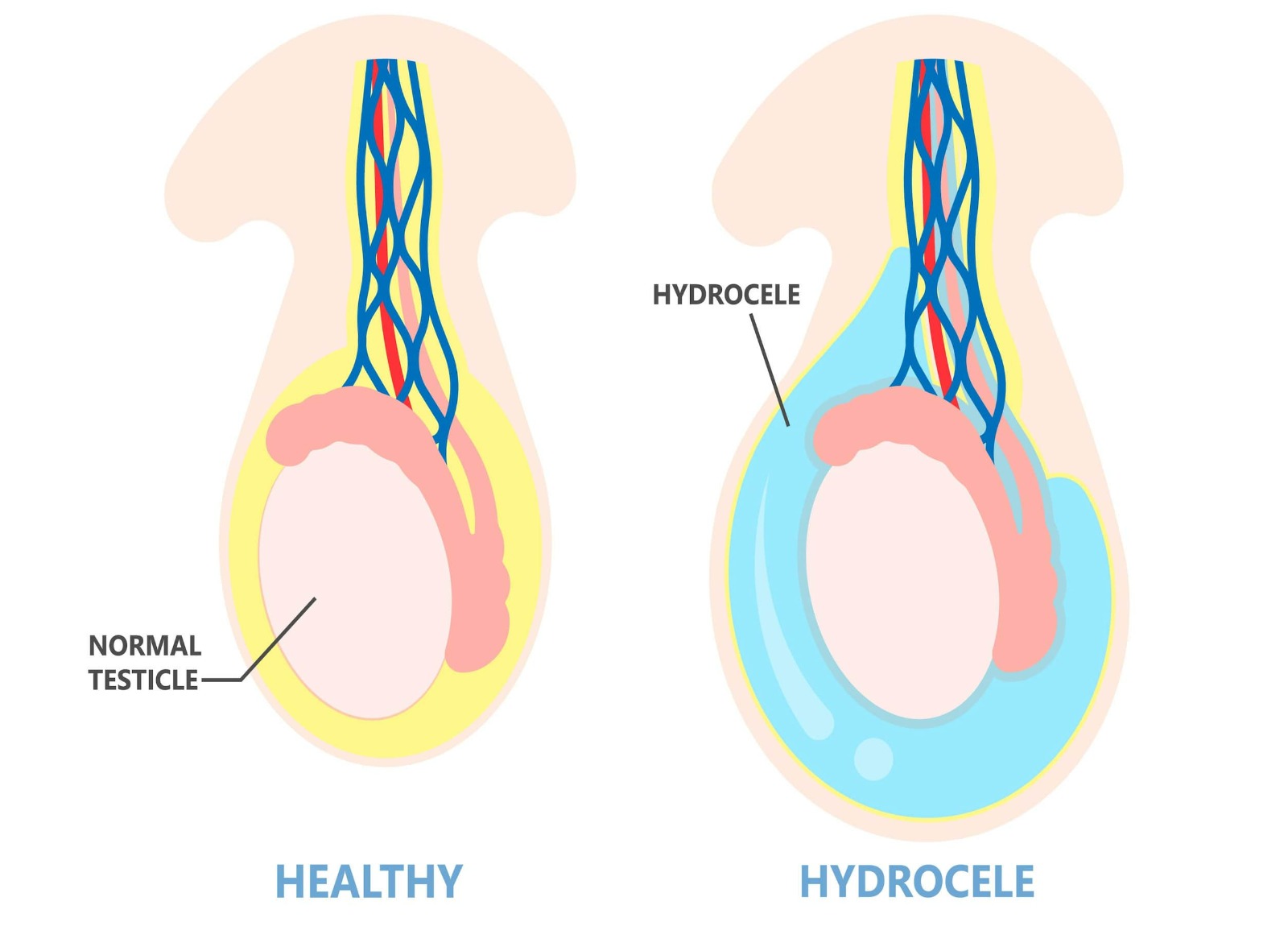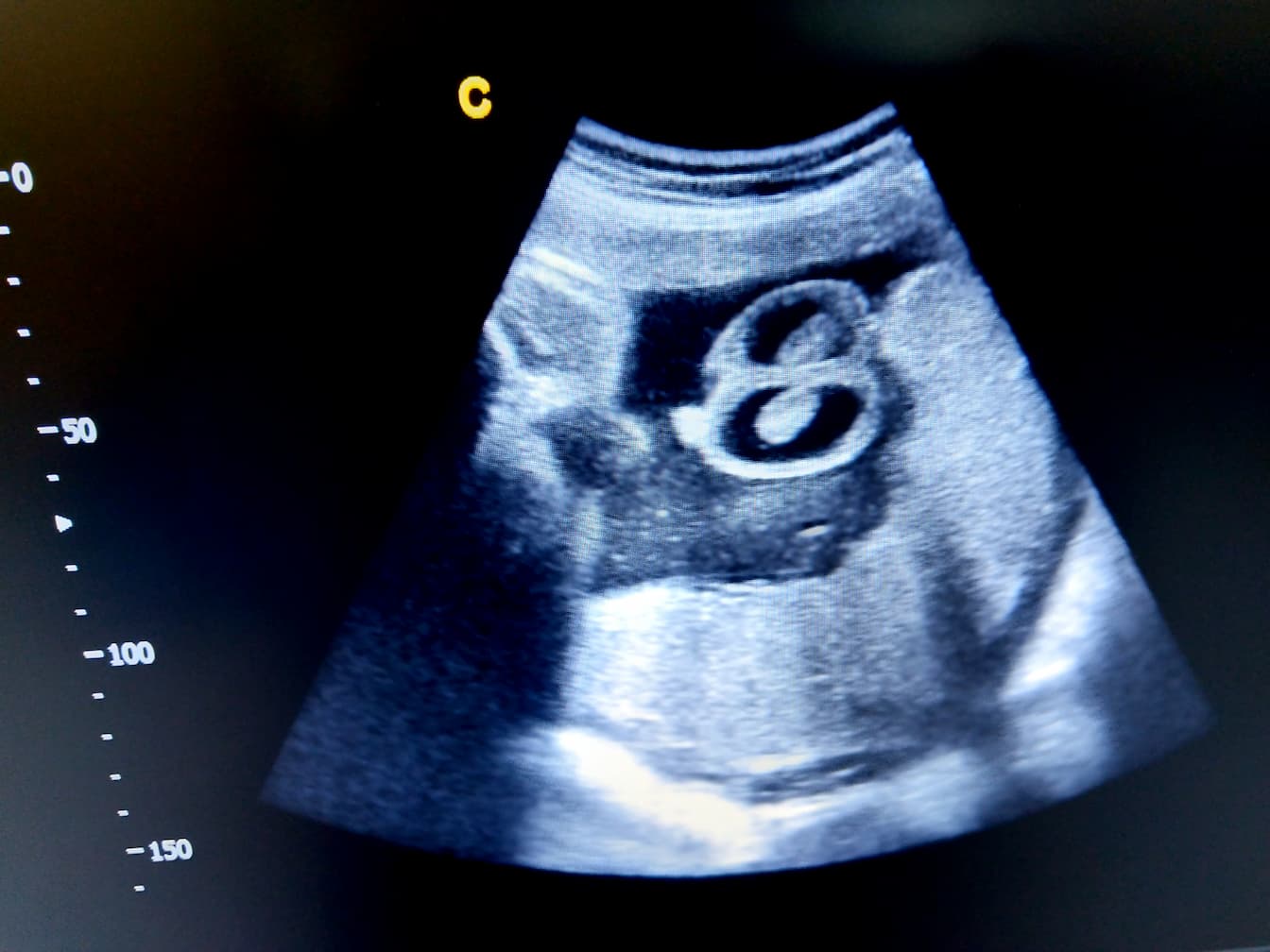Hydrocele Treatment in Turkey
Healthy Turkiye helps you find the best hydrocele treatment in Turkey at affordable prices and adopts a 360-degree service approach in all areas of health through affiliated hospitals.
- Medical Treatment
- Bladder Cancer Treatment in Turkey
- Enlarged Prostate Treatment in Turkey
- Kidney Stones Removal in Turkey
- Urology Treatment in Turkey
- Erectile Dysfunction Treatment in Turkey
- Laparoscopic Prostate Surgery in Turkey
- Prostatectomy Treatment in Turkey
- Vasectomy in Turkey
- Penis Enlargement in Turkey
- TURP Surgery in Turkey
- Glomerulonephritis Treatment in Turkey
- Urinary Retention Treatment in Turkey
- Hydrocele Treatment in Turkey
- Laser Lithotripsy in Turkey
- Percutaneous Nephrolithotomy in Turkey
- Peyronie’s Disease Treatment in Turkey
- Renal Artery Stenosis Treatment in Turkey
- Urinary Incontinence Treatment in Turkey
- Vasectomy Reversal Treatment in Turkey
- Homepage
- Medical Treatment
- Hydrocele Treatment in Turkey

About Hydrocele Treatment in Turkey
Hydrocele treatment in Turkey is performed successfully with various methods. The hydrocele is an accumulation of serous fluid around testicles in a sac within the scrotum. This disease presents as a painless swelling in the scrotum the sac that carries testicles.
In fact, hydrocele is a fairly widespread condition in the world. Generally, 10% of newborn males have this condition, more commonly in premature-borne boys. 1% of adult men can have it and men over the age of 40 commonly present with it.
Hydrocele feels like a small fluid-filled balloon within the scrotum, which might develop in one or both testicles. This balloon is smooth and mainly in front of the testes. It painless and the swelling may or may not increase in size.
When hydrocele enlarge, cause discomfort in walking, or also affect sexual activity. It can also be an early indication of some serious disease, so it is important to consult a doctor as soon as you notice unusual swelling or experience any pain.
Symptoms of Hydrocele
Hydrocele symptoms are unilateral or bilateral scrotal volume increase with relative and variable discomfort due to space compromise and this increase in volume, ranging from not causing great discomfort to being very annoying. It can causing swelling and discomfort especially when the liquid is under high tension.
During physical examination the scrotum is tight, generally, not painful to the touch. Also, the testicle is not easy to feel because of the fluid that surrounds it. The size of the hydrocele can sometimes increase or decrease by putting pressure on the abdomen. A hydrocele generally does not go away on its own and can be easily seen by shining a flashlight on the testicle through the swollen part of the scrotum in dim light from the room.
Diagnosis of Hydrocele
A doctor can diagnose a hydrocele in a child or adult. They’ll ask questions about your symptoms and perform a physical examination for diagnosis of hydrocele. During the physical exam, the doctor may apply pressure to the groin area or ask you to cough to see how the swelling changes. They may shine a light through your scrotum to highlight any abdominal fluid in the site. A doctor can diagnose most hydroceles from a physical exam alone. Also, to confirm their diagnosis, the doctor may order imaging tests, including:
Pelvic ultrasound: A pelvic ultrasound test uses high-frequency sound waves to create images of the soft tissues in your pelvis, including your testicles. It’s the most common imaging test doctors order for a hydrocele diagnosis.
Computed tomography (CT) scan: A CT scan is a type of X-ray that takes cross-section pictures of your body to create 3D images of your testicles. The CT scan is more precise than a standard X-ray.
Causes of Hydrocele
Hydroceles can develop at any age, yet tend to be more common in newborns. While they can develop without any underlying causes, an underlying injury or even inflammation can also contribute to their development. For most men, hydroceles are nothing more than an inconvenient yet temporary condition.
Hydrocele in Infants
A baby’s testicles descend from their abdomen into the scrotum towards the end of pregnancy. The scrotum is the sac of skin that holds the testicles once they descend and during development, each testicle has a naturally occurring sac around it that contains fluid. Normally, this sac closes itself and the body absorbs the fluid inside during the baby’s first year, however, this doesn’t happen for babies with a hydrocele. Babies born prematurely are at a higher risk for occuring hydrocele.
Hydrocele in Adults
Hydroceles can also form later in life, mostly in patient over 40. They can develop from a hernia but this is less common. Most of the time it is either from inflammation or from the sac not reabsorbing fluid properly. The epithelial cells in the sac produce and reabsorb the fluid constantly and there may be dysfunction with these cells leading to excess fluid.
Hydroceles may also be caused by inflammation or injury in the scrotum or along the channel. The inflammation can be caused by an infection (epididymitis) or another condition.
Different Types of Hydroceles
While hydroceles are generally not very harmful in most individuals, the way they manifest can vary depending on their development within the body. The two most prevalent variants are noncommunicating and communicating hydroceles.
Noncommunicating hydroceles develop when the sac closes, but the body fails to absorb the fluid. Typically, the residual fluid is absorbed into the body over the course of a year.
Conversely, communicating hydroceles form when the sac surrounding the testicle doesn't completely close, allowing fluid to enter and exit.
Nuck's hydroceles, a rare variety, are found in individuals without testicles. They can occur in the lining of the pelvic wall and may lead to painful swelling in the groin's lymph nodes. This condition can be mistaken for ovarian cysts, endometriosis, and numerous other ailments, making diagnosis and treatment challenging.

Option for Hydrocele Treatment in Turkey
When it comes to treating a hydrocele, there are several viable options depending on the specific circumstances and the patient's preferences. Here are the main treatment options:
1. Observation (Watchful Waiting):
In cases where the hydrocele is small and not causing any discomfort or complications, a conservative approach is to closely monitor the condition over time. This is often recommended for infants with hydroceles, as they frequently resolve on their own within about a year. Adult patients with small, asymptomatic hydroceles can also opt for this approach, avoiding the need for immediate medical intervention. Regular checkups and ultrasounds may be conducted to track any changes and ensure the hydrocele is not worsening.
2. Surgery (Hydrocelectomy):
Hydrocelectomy is a surgical procedure that is recommended when the hydrocele is large, uncomfortable, or shows no signs of spontaneous resolution. This surgery involves making a small incision in either the scrotum or the lower abdominal wall, depending on the hydrocele's location. Through this incision, the surgeon drains the accumulated fluid around the testicle and seals off the passage between the abdomen and the scrotum to prevent the fluid from re-accumulating. Hydrocelectomy is typically considered a minor surgical operation and is often performed on an outpatient basis, which means that patients can usually return home the same day. Although hydroceles can occasionally reoccur after surgery, this is a rare outcome.
3. Fluid Drainage:
Another option for managing a hydrocele is to temporarily alleviate the discomfort by draining the fluid from the hydrocele using a needle and syringe. This approach provides relief but does not address the root cause of the condition. It's essential to understand that, following this procedure, it's common for the hydrocele sac to refill with fluid within a few months. Therefore, periodic drainage may be considered for individuals who are not suitable candidates for surgery or who prefer a non-surgical solution. This method is often used in cases where the patient's overall health or specific circumstances make surgical intervention risky or less desirable.
4. Sclerotherapy:
Sclerotherapy is a less common treatment option for hydroceles. It involves injecting a specialized solution into the hydrocele sac after drainage. The purpose of this solution is to induce scarring and adhesion within the sac, preventing fluid re-accumulation. While this method is not widely employed, it may be offered to individuals who are not suitable candidates for surgery or have specific medical conditions that make other treatment options less feasible.
The choice of treatment for a hydrocele is not one-size-fits-all and should be tailored to the individual's circumstances. Factors such as the size of the hydrocele, the presence of symptoms, the patient's overall health, and personal preferences all play a role in determining the most suitable treatment plan. Therefore, it is crucial to consult with a qualified healthcare professional who can provide expert guidance and recommendations, taking into account the specific details of your condition to ensure the best possible outcome. Healthy Türkiye expert team will offer a thorough evaluation, discuss the pros and cons of each treatment option, and help you make an informed decision regarding the most appropriate approach to managing your hydrocele.
After Hydrocele Treatment in Turkey
Hydrocele repair is performed as a day case procedure so you should normally be able to go home the same day, so the stitches used are absorbable and do not require removal.
Following the surgery, a member of the urology team will come and see you, to tell you how the operation went and what you should expect afterwards. You will be given a discharge summary containing details about your admission and surgery, which you should take with you to further consultations.
After 24 hours, you can remove any dressings and give your groin site a quick wash. Sometimes, instead of a dressing a plastic film is used abd do not remove this – it will flake off when healing has occurred.
You are recommended to avoid long washes until the wound heals. Bathing can lead to stitches dissolving too early, which can cause infection. So you should avoid bathing for a week afterwards. You should continue to wear tight supportive underwear day and night for a fortnight after the operation.
Similar Conditions to Hydrocele
Sometimes the hydrocele symptoms may be very similar to what might happen with other testicular conditions. However, the causes behind these other cases are slightly different from a hydrocele.
Hydrocele and Permatocele: Spermatocele is another usually benign condition that may cause swelling. But, these are cysts that form within the tubules that lead to the testis.
Hydrocele and Varicocele: Both hydroceles and varicoceles are conditions that cause testicular lumps or swelling. But the location and cause of the swelling for both conditions is different. Hydrocele swelling is caused by fluid around the testical and varicocele swelling is when the veins inside the testicals are dilated or enlarged.
Hydrocele and Inguinal Hernia: The hydrocele is not an inguinal hernia but depending on the type of hydrocele that’s present, the likelihood of an inguinal hernia forming is possible. In a communicable hydrocele where the remaining opening to the sac is large enough, pressure may push the intestines into the opening, causing a bulge.
Hydrocele and Epididymal Cyst: Usually, epididymal cysts form when fluid collects in the epididymis, a coiled tube that sits behind the testicles.
Hydrocele and Epididymitis: Epididymitis is inflammation of the epididymis, often this is caused by an infection — usually a sexually transmitted infection (STI). In some cases, this condition can cause a hydrocele to occur.
Hydrocele and Hematocele: Hydroceles and hematoceles are similar cases but with a specific difference. While hydroceles are fluid-filled sacs, hematoceles are sacs filled with blood and the hematocele is usually associated with trauma or injury.

We Care About Your Health
Healthy Türkiye provides the best for your health and comfort. You will feel privileged with us.
7/24 Quality Personal Assistance Throughout Your Journey
Customizable for You All-Inclusive Packages
Get the Right Advice for your Health
2026 Cost of Hydrocele Treatment in Turkey
All types of medical attentions like hydrocele treatment are very affordable in Turkey. Many factors are also included in determining the cost of hydrocele treatment in Turkey. Your process with Healthy Türkiye will last from the time you decide to have a hydrocele treatment in Turkey until the time you are fully recovered even if you are back home. The exact hydrocele treatment procedure cost in Turkey depends on the type of operation involved.
The cost of hydrocele treatment in Turkey does not demonstrate many variations in 2026. Compared to costs in developed countries like the United States or the UK, hydrocele treatment costs in Turkey are relatively low. So, it's no wonder patients from across the world visit Turkey for hydrocele treatment procedures. However, the price is not the only factor affecting choices. We suggest looking for hospitals that are safe and have hydrocele treatment reviews on Google. When people decide to seek medical help for hydrocele treatment, they will not only have had low-cost procedures in Turkey, but also the safest and best treatment.
At clinics or hospitals contracted with Healthy Türkiye, patients will receive the best hydrocele treatment from specialist doctors in Turkey at affordable rates. Healthy Türkiye teams provide medical attention hydrocele treatment procedures and high-quality treatment to patients at a minimum cost. When you contact Healthy Turkey assistants, you can get free information about the cost of hydrocele treatment in Turkey and what this cost covers.
The cost of a hydrocele treatment in the UK is £5.000.
The cost of a hydrocele treatment in the USA is between $5.000-$10.000.
The cost of a hydrocele treatment in Turkey is between $1.000-$2.000.
Price of Hydrocele Treatment in the UK?
Price of Hydrocele Treatment in the USA?
Price of Hydrocele Treatment in Turkey?
Why Is Hydrocele Treatment Cheaper in Turkey?
One of the main considerations before traveling abroad for hydrocele treatment is the cost-effectiveness of the whole process. Many patients think that when they add flight tickets and hotel expenses to their hydrocele treatment costs, it will become very expensive to travel, which is not true. Contrary to popular belief, round-trip flight tickets to Turkey for hydrocele treatment can be booked very affordably.
In this case, assuming you are staying in Turkey for your hydrocele treatment, your total travel expense of flight tickets and accommodation will only cost less than any other developed country, which is nothing compared to the amount that you are saving. The question “why hydrocele treatment cheaper in Turkey?” is so common between patients or people simply curious about getting their medical treatment in Turkey. When it comes to hydrocele treatment prices in Turkey, there are 3 factors allowing cheaper prices:
The currency exchange is favorable for whoever looking for hydrocele treatment has a euro, dollar, or pound;
The lower cost of living and cheaper overall medical expenses such as hydrocele treatment;
For hydrocele treatment, incentives are given by the Turkish Government to medical clinics working with international clients;
All these factors allow for cheaper hydrocele treatment prices, but let’s be clear, these prices are cheaper for people with strong currencies (as we said, euro, dollar, Canadian dollar, pound, etc).Every year, thousands of patients from all over the world come to Turkey to get hydrocele treatment. The success of the healthcare system has increased in recent years, especially for hydrocele treatment. It’s easy to find well-educated and English-speaking medical professionals in Turkey for all kinds of medical treatment such as hydrocele treatment.

Why Choose Turkey for Hydrocele Treatment?
Turkey is a common choice among international patients seeking advanced hydrocele treatment. Turkey’s health procedures are safe and effective operations with a high success rate like hydrocele treatment. The increasing demand for high-quality hydrocele treatment at affordable prices has made Turkey a popular medical travel destination. In Turkey, hydrocele treatment is performed by highly experienced and trained doctors with the most advanced technology in the world. hydrocele treatment is done in Istanbul, Ankara, Antalya, and other major cities. The reasons for choosing hydrocele treatment in Turkey are as follows:
High-quality hospitals: Joint Commission International (JCI) accredited hospitals have dedicated hydrocele treatment units that are specially designed for patients. International and national strict protocols provide effective and successful hydrocele treatment for patients in Turkey.
Qualified experts: The expert teams include nurses and specialist doctors, together to carry out hydrocele treatment according to the patient's needs. All the included doctors are highly experienced in performing hydrocele treatment.
Affordable price: The cost of hydrocele treatment in Turkey is affordable compared to Europe, the USA, the UK, Singapore, Australia, etc.
The high success rate: Highly experienced specialists, the best available technology, and stringently followed safety guidelines for post-operative care of the patient, resulting in a high success rate for hydrocele treatment in Turkey.
Is Hydrocele Treatment Safe in Turkey?
Did you know Turkey is one of the most visited destinations for hydrocele treatment in the world? It is ranked one of the most visited tourist destinations for hydrocele treatment. Over the years it has also come to be a very popular medical tourism destination too with many tourists coming in for hydrocele treatment. There are so many reasons why Turkey stands out as a leading destination for hydrocele treatment. Because Turkey is both safe and easy to travel to too with a regional airport hub and flight connections to pretty much everywhere, it is preferred for hydrocele treatment.
The best hospitals in Turkey have experienced medical staff and specialists who have performed thousands of medical services such as hydrocele treatment. All procedures and coordination related to hydrocele treatment are controlled by the Ministry of Health in accordance with the law. Over many years, the greatest progress in medicine has been observed in the field of hydrocele treatment. Turkey is known among foreign patients for its great opportunities in the area of hydrocele treatment.
To emphasize, besides the price itself, the key factor in selecting a destination for hydrocele treatment is certainly the standard of medical services, the hospital staff’s high expertise, hospitality, and the safety of the country.
All-Inclusive Package for Hydrocele Treatment in Turkey
Healthy Türkiye offers all-inclusive packages for hydrocele treatment in Turkey at much lower prices. Extremely professional and experienced doctors and technicians carry out the high-quality hydrocele treatment. The cost of hydrocele treatment in European countries can be quite expensive, especially in the UK. Healthy Türkiye provides cheap all-inclusive packages for a long and short stay of hydrocele treatment in Turkey. Because of many factors, we can provide you with many opportunities for your hydrocele treatment in Turkey.
The price of hydrocele treatment differs from other countries due to medical fees, staff labor prices, exchange rates, and market competition. You can save much more in hydrocele treatment compared to other countries in Turkey. When you purchase hydrocele treatment all-inclusive package with Healthy Türkiye our healthcare team will present of hotels for you to choose from. In hydrocele treatment travel, you will have the price of your stay included in the all-inclusive package cost.
In Turkey, when you purchase hydrocele treatment all-inclusive packages through Healthy Türkiye, you will always receive VIP transfers. These are provided by Healthy Türkiye, which is contracted with highly qualified hospitals for hydrocele treatment in Turkey. Healthy Türkiye teams will organize everything about hydrocele treatment for you and have you picked up from the airport and safely brought to your accommodation. Once settled in the hotel, you will be transferred to and from the clinic or hospital for hydrocele treatment. After your hydrocele treatment has been successfully completed, the transfer team will return you to the airport in time for your flight home. In Turkey, all packages of hydrocele treatment can be arranged upon request, which relaxes the minds of our patients.
The Best Hospitals in Turkey for Hydrocele Treatment
The best hospitals in Turkey for hydrocele treatment are Healthy Türkiye, Memorial Hospital, Acıbadem International Hospital, and Medicalpark Hospital. These hospitals attract patients from all over the world seeking hydrocele treatment due to their affordable prices and high success rates.
Best Doctors and Surgeons in Turkey for Hydrocele Treatment
The best doctors and surgeons in Turkey for hydrocele treatment are highly skilled professionals who offer specialized care and advanced procedures. With their expertise and state-of-the-art techniques, these specialists ensure that patients receive high-quality hydrocele treatment and achieve optimal health results.

Frequently Asked Questions
You can eat your normal diet. If your stomach is upset, try bland, low-fat foods like plain rice, boiled chicken, bread, and yogurt. Drink a lot of fluids to avoid dehydration.
If left untreated, hydroceles can continue to grow, causing discomfort and an enlarged scrotum. In rare cases, they may become infected or lead to other scrotal conditions, such as epididymitis (inflammation of the epididymis).
Yes, in some cases, a hydrocele can develop as a complication of hernia repair surgery, particularly in the case of inguinal hernia repair. This is known as a "post-herniorrhaphy hydrocele." It may require separate treatment.
Recovery time after hydrocele surgery varies but is typically relatively short, with most patients resuming normal activities within a few days to a week. Discomfort and pain are usually managed with over-the-counter pain medication, and your surgeon will provide guidance on post-operative care to minimize discomfort.
Yes. Hydroceles are not a major health issue.
No, Hydrocele is not associated with infertility or erectile dysfunction.
The prognosis of hydrocele is generally positive and surgery has a high success rate
You can eat your normal diet. If your stomach is upset, try bland, low-fat foods like plain rice, boiled chicken, bread, and yogurt. Drink a lot of fluids to avoid dehydration.
